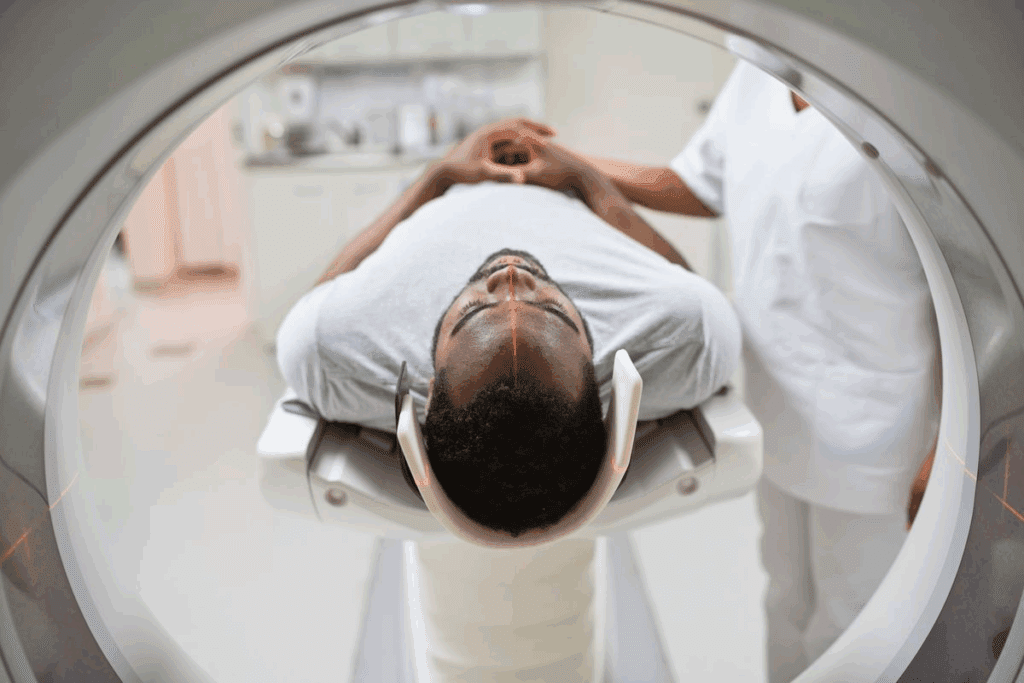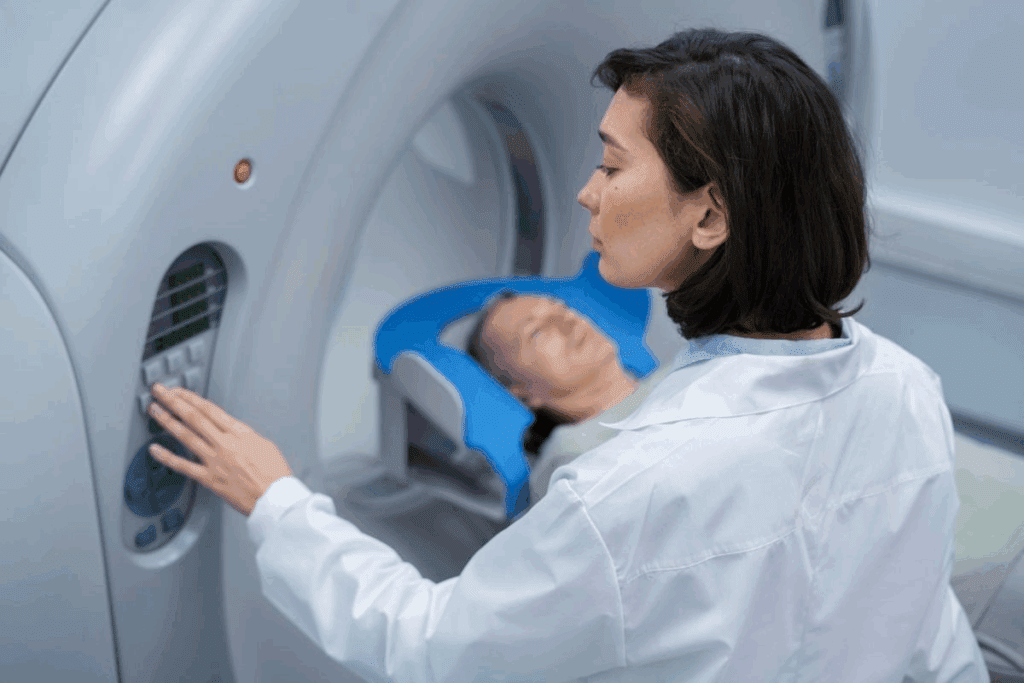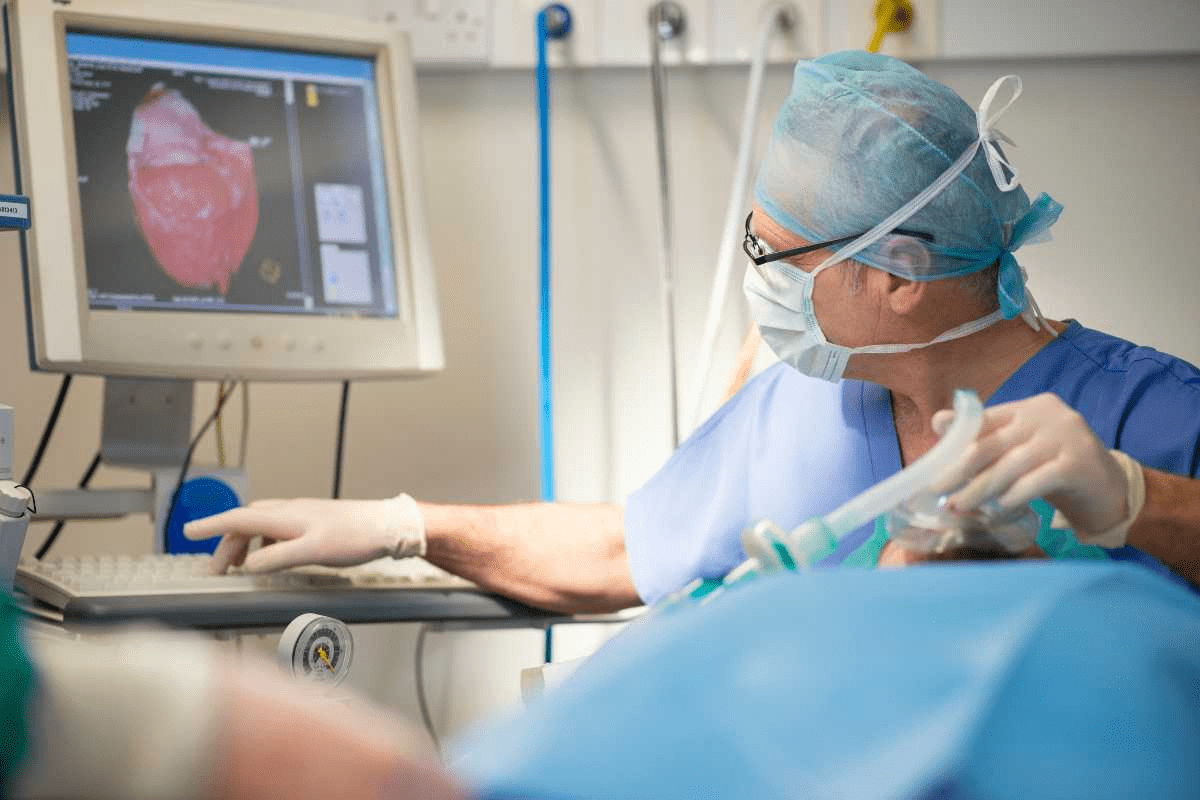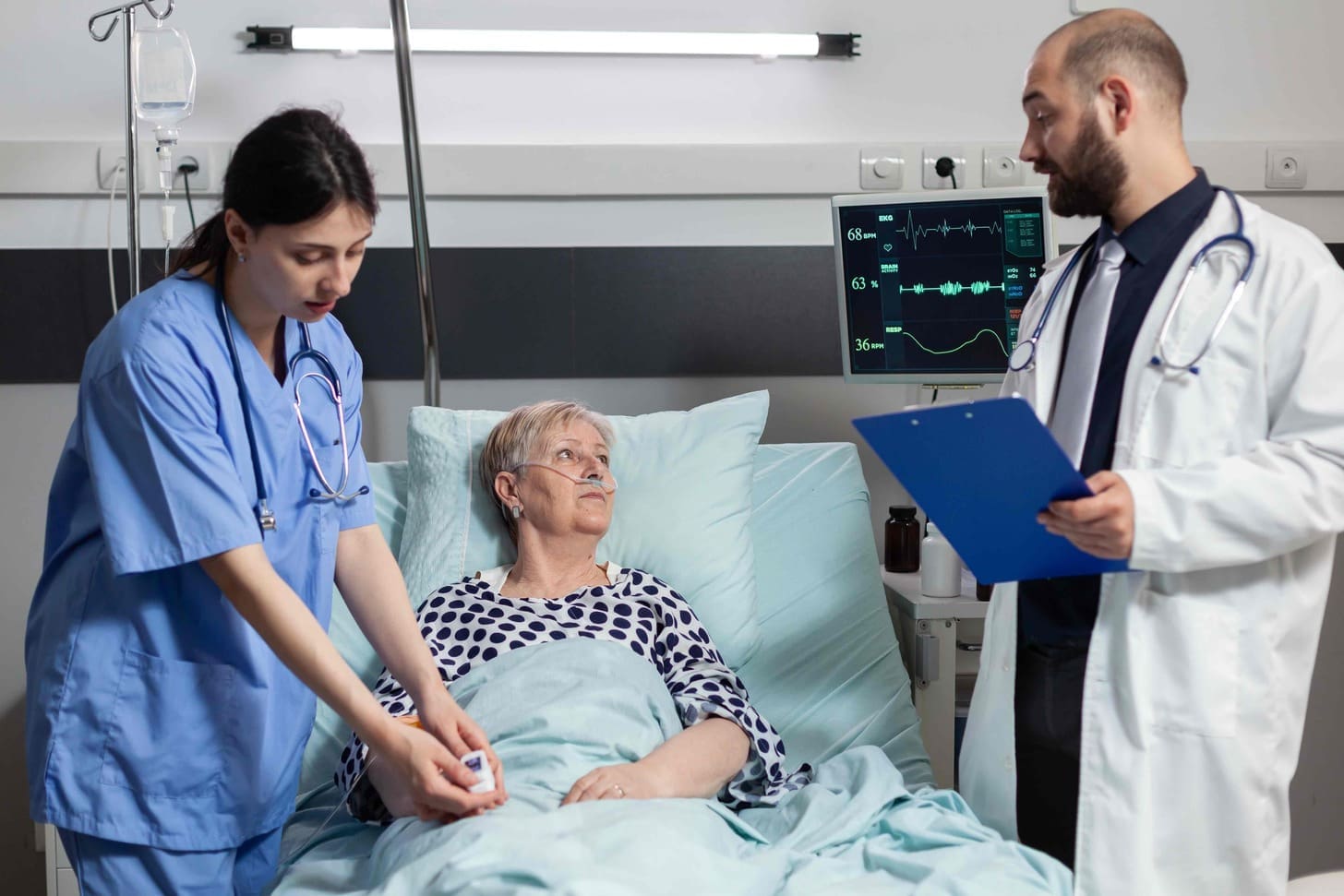Last Updated on November 27, 2025 by Bilal Hasdemir

Many patients wonder “can you drive after pet scan,” especially because nearly 40% report feeling tired or experiencing other side effects after the procedure. Feeling fatigued is common due to the radioactive tracer used in PET scans, which may cause mild symptoms like nausea, headache, or dizziness. These effects usually resolve within a few hours. It’s important to understand these potential symptoms and follow your healthcare provider’s advice regarding activities like driving. Although medical guidelines generally state it is safe to drive after a PET scan, individual reactions vary. If you feel unusually tired or unwell, it is safer to arrange alternate transportation.
Key Takeaways
- Understanding the possible side effects of PET scans
- How common is feeling tired after a PET scan?
- Knowing what to expect after a PET scan is key
- What affects pet scan symptoms?
- Ways to handle radiology after effects
What Happens During a PET Scan Procedure

A PET scan is a detailed medical imaging method. It shows how the body’s cells work. This test is used to find and manage health issues like cancer and heart problems.
The Science Behind PET Imaging Technology
PET imaging uses gamma rays from radioactive tracers. These tracers go into the body’s tissues. The PET scanner then makes detailed images of the body’s inside.
This technology is based on nuclear medicine. The tracers are linked to glucose. This helps find areas with lots of activity, like tumours.
Radioactive Tracers and Their Function
Radioactive tracers are key in PET scans. Fluorodeoxyglucose (FDG) is the most used. It’s a glucose molecule with a radioactive atom. When injected, it goes to areas that use a lot of glucose, like tumors.
- The tracer is injected into a vein, usually in the arm.
- It then circulates through the bloodstream, accumulating in areas of high metabolic activity.
- The PET scanner detects the radiation emitted by the tracer, creating detailed images of the body’s internal structures.
Duration and Physical Requirements of the Scan
A PET scan can take 30 minutes to several hours. It depends on the test type. Patients must stay very quiet and not move during the scan.
Key physical requirements include:
- Remaining very quiet and calm during the scan.
- Following pre-scan instructions, such as fasting or avoiding certain medications.
- Being ready to spend a few hours at the imaging facility, as the process can take time.
Knowing what happens during a PET scan can help patients feel more ready. It can also lower their anxiety about the test.
Why Fatigue is a Common Post-Scan Symptom

Fatigue after a PET scan is common among patients. Knowing why it happens can help ease worries. The scan uses radioactive tracers and requires fasting, both of which can make you feel tired.
Metabolic Effects of Radioactive Tracers
PET scans use tracers to show specific body areas. But these tracers can also change how your body works. The introduction of a foreign substance can stimulate various physiological responses, leading to fatigue.
The energy needed to process these tracers can make you feel drained. The tracers also affect blood sugar and metabolism, which can lower your energy.
Fasting Requirements and Blood Sugar Impact
Fasting before a PET scan is needed for the tracer to work right. This fasting can cause low blood sugar, which makes you tired. The fasting and tracer effects together can make you feel even more tired.
| Factor | Impact on Fatigue |
| Radioactive Tracers | Metabolic effects, energy expenditure |
| Fasting Requirements | Low blood sugar levels, increased fatigue |
| Combined Effects | Exacerbated feelings of tiredness and exhaustion |
Knowing these factors can help you prepare for your PET scan. It can also help you understand why you might feel tired after it. By understanding the causes, you can take steps to feel better faster.
Understanding Common Post-Scan Symptoms in Detail
It’s important to know about the different symptoms that can happen after a PET scan. These symptoms can change a lot from person to person. They can be affected by things like the tracer used, the patient’s health, and the scan’s protocol.
Immediate Physical Reactions
Right after a PET scan, people might feel a few things. Some common feelings include:
- Fatigue or feeling tired
- Dizziness or lightheadedness
- Nausea or discomfort
These feelings usually don’t last long and go away in a few hours. But knowing about them can help patients prepare and recover better.
Delayed Reactions Hours After the Procedure
Some people might feel symptoms later, hours after the scan. These can include:
| Symptom | Description | Duration |
| Fatigue | Feeling extremely tired or weak | Several hours to a day |
| Headache | Mild to moderate headache | A few hours to a day |
| Dizziness | Feeling lightheaded or unsteady | A few hours |
Knowing about these delayed symptoms can help patients get ready for their recovery. It also tells them when to see a doctor if symptoms don’t get better or get worse.
Managing Post-Scan Symptoms: To deal with symptoms after a scan, patients can do a few things. They should drink lots of water, rest when they need to, and follow any advice from their healthcare team.
The Physiological Impact of PET Scans on Your Body
It’s important for patients and doctors to know how PET scans affect the body. These scans are key for diagnosis but also change how the body works.
PET scans use radioactive tracers. These are safe in small amounts but can change how cells make energy. Radiation exposure from PET scans can alter cell function temporarily.
How Radiation Exposure Affects Cellular Energy
PET scans use tracers that emit positrons. These positrons hit electrons in the body, creating gamma rays. The scanner then detects these rays.
This radiation exposure can briefly change how cells make energy. But this effect is usually small and goes back to normal. Knowing this helps manage symptoms after the scan.
Your Body’s Natural Recovery Process
The body can easily recover from PET scan radiation. It gets rid of the tracer mainly through urine and fixes any cell damage.
Drinking enough water, eating well, and resting helps the body recover faster. This makes it easier to get back to normal after the scan.
Psychological Factors Contributing to Post-PET Scan Exhaustion
The anxiety and stress from PET scans can really take a toll on patients, causing them to feel very tired. It’s important to understand the psychological reasons behind this exhaustion.
Anxiety and Stress Before and During the Procedure
Many patients feel stressed before a PET scan. They worry about the procedure, the results, and what it might mean for their health. This worry can be as exhausting as the scan itself.
During the scan, patients may feel stressed because of the new environment and having to stay very quiet for a long time. Talking to healthcare providers can help by explaining what to expect.
| Source of Anxiety | Impact on Patient | Mitigation Strategy |
| Uncertainty about procedure | Increased stress levels | Clear explanation of the process |
| Fear of results | Anxiety and worry | Support from healthcare providers |
| Confinement during scan | Feelings of claustrophobia | Relaxation techniques |
Emotional Response to Medical Testing and Results
The emotional impact of medical tests and results can also lead to exhaustion after a PET scan. Getting a diagnosis, whether it’s good, bad, or unclear, can be very hard. Patients may feel many emotions, like relief or sadness, based on the news.
The feelings after a PET scan can be complex. They involve not just the immediate reaction but also adjusting to the news over time. Support from loved ones and healthcare teams is key during this time.
By recognizing the psychological reasons for post-PET scan exhaustion, patients and doctors can find ways to help. This can make the recovery process better for everyone.
Normal vs. Abnormal Post-Scan Symptoms
After a PET scan, patients might feel tired or have more serious reactions. It’s important to know the difference between normal side effects and signs that need medical help. Knowing what’s normal and what’s not can make a big difference in how you feel after the scan.
Expected Side Effects and Their Duration
Most people do fine after a PET scan. But, some might feel side effects from the tracer or fasting. Common ones are:
- Mild fatigue
- Dizziness or lightheadedness
- Nausea
These usually go away quickly, in a few hours to a couple of days. Drinking water and eating a healthy meal after the scan can help.
Warning Signs That Require Medical Attention
But, some symptoms mean you should see a doctor right away. Warning signs include:
- Severe or prolonged fatigue
- Increasing pain or discomfort
- Difficulty breathing or chest pain
If you have any of these, call your doctor fast. As one doctor said,
“It’s always better to err on the side of caution when it comes to your health, after a medical procedure like a PET scan.”
Recovery Tips: Managing Exhaustion After Your PET Scan
Effective recovery strategies can help alleviate the exhaustion often associated with PET scans. Managing your recovery is key to getting back to normal activities quickly.
Hydration and Nutrition Strategies
Proper hydration and nutrition are vital for recovery. Drinking lots of water helps remove the radioactive tracer from your body. Eating a balanced diet with fruits, vegetables, and whole grains helps restore your energy.
- Drink at least 8-10 glasses of water per day
- Eat nutrient-dense foods like lean proteins, whole grains, and colorful vegetables
- Avoid heavy meals and opt for light, frequent meals if you’re feeling nauseous
Rest and Activity Recommendations
Balancing rest and activity is essential during recovery. Resting is important, but too much can make you stiff and tired.
- Take regular breaks to rest throughout the day
- Engage in light physical activities like short walks or stretching exercises
- Avoid strenuous activities for at least 24 hours after your PET scan
When to Resume Normal Activities
Listen to your body and don’t rush back to your routine. Most people can get back to normal in a day or two. But, it depends on individual factors.
- Pay attention to your body’s signals; if you’re feeling tired, it’s okay to take more rest
- Gradually increase your activity levels over a few days
- Consult your healthcare provider if you have concerns about resuming your normal activities
Patient Factors Affecting Post-PET Scan Experiences
How a patient feels after a PET scan depends on many things. These include their age, health, and other personal factors.
Age and Overall Health Considerations
Age and health are big factors in how a patient recovers. Older people might take longer to get better because of less energy and health issues. Younger people and those in better health usually recover faster.
Key factors to consider include:
- Physical condition before the scan
- Presence of chronic conditions
- Level of physical activity
Pre-existing Conditions and Their Impact
Health problems before the scan can change how a patient feels. For example, diabetes, heart disease, or kidney disease can affect how the body reacts to the scan’s tracer.
For example: People with diabetes might need to change their medicine or insulin because fasting can affect blood sugar.
Medication Interactions and Considerations
Some medicines can mess with the PET scan or the tracer. It’s important for patients to tell their doctors about all their medicines.
Medications that may be of concern include:
- Certain diabetes medications
- Blood thinners
- Medications that affect kidney function
Knowing these factors helps doctors prepare patients better. They can give care that fits each person’s needs and helps avoid side effects.
Comparing PET Scans to Other Imaging Procedures
It’s important to know how PET scans differ from CT and MRI scans. This helps patients understand what to expect after the scan and how to recover.
Post-Scan Symptoms: PET vs. CT and MRI
PET scans, CT scans, and MRI scans each have their own effects on the body. PET scans use radioactive tracers, which can make you feel tired. CT scans use X-rays to see inside the body, and MRI scans use strong magnetic fields and radio waves.
While PET scans can make you feel very tired, CT and MRI scans might not. But, CT scans can expose you to radiation, and MRI scans can make you feel claustrophobic.
Recovery Differences Between Various Imaging Techniques
Recovering from a PET scan is different from recovering from CT or MRI scans. After a PET scan, your body needs time to get rid of the radioactive tracer. This can take several hours or even a day.
During this time, you might feel tired, have a dry mouth, or experience other side effects. CT scans are faster to recover from, with most people feeling fine right away. MRI scans are even quicker, with little to no side effects because they don’t use radiation.
Key differences in recovery include:
- PET scans: Longer recovery due to radioactive tracer elimination
- CT scans: Quick recovery, minimal post-scan effects
- MRI scans: Generally minimal post-procedure effects, though some may experience claustrophobia or fatigue
Knowing these differences helps patients prepare for what happens after the scan. It also helps them recover better.
Medical Perspectives on Post-Scan Symptoms
It’s important for patients to know about post-scan symptoms after tests like PET scans. Doctors’ views on these symptoms help a lot in patient care and recovery.
Research on Post-Diagnostic Test Fatigue
More research is being done on post-test fatigue. Doctors want to know why it happens and how it affects patients. They look at things like the test type, patient health, and how ready the patient is before the test.
Key findings from recent research include:
- The role of radioactive tracers in PET scans and their metabolic effects.
- The impact of fasting requirements before the scan on blood sugar levels and energy.
- The variation in patient responses to different diagnostic tests.
How Healthcare Providers Address Patient Concerns
Doctors are always finding new ways to help with post-scan symptoms. They create care plans for each patient, give nutrition advice, and make sure patients drink enough water after the test.
Effective communication between patients and healthcare providers is key. It helps manage expectations and reduce anxiety about tests and their effects.
Knowing what doctors think about post-scan symptoms helps patients. It prepares them for recovery and teaches them how to handle their symptoms well.
Patient Experiences: Real Stories of PET Scan Recovery
People’s experiences after a PET scan show a wide range of recovery times and ways to cope. Each person’s journey is unique, shaped by their health, age, and any health issues they might have.
Varied Experiences and Recovery Timelines
Recovery from a PET scan can differ a lot from one person to another. One patient,who had a stroke, shared her recovery journey. She talked about the emotional and physical hurdles she faced. Her story shows how important personalized care and support are during recovery.
How long it takes to recover can vary from a few days to weeks. This depends on the person’s health before the scan, the type of PET scan, and how well the body reacts to the tracer used.
| Recovery Aspect | Common Experiences | Variations |
| Physical Fatigue | Feeling tired or exhausted | Duration varies; some recover quickly, while others take longer |
| Emotional Response | Anxiety, relief, or mixed emotions | Emotional state can be influenced by scan results and personal health context |
| Coping Mechanisms | Rest, hydration, and nutrition | Some find additional strategies like meditation or support groups helpful |
Coping Strategies That Helped Others
Patients have found many ways to cope during their recovery. Rest and hydration are often advised, as they help the body heal from the scan’s effects.
“After my PET scan, I felt extremely fatigued. Resting and drinking plenty of water helped me recover more quickly. I also found solace in talking to others who had gone through similar experiences.” – Patient testimonial
Other coping strategies include nutritional adjustments and gentle exercise, tailored to each person’s health and recovery needs.
- Stay hydrated by drinking plenty of water
- Resume normal activities gradually
- Consider support groups for emotional support
By sharing these real stories and strategies, we can better understand the diverse experiences of PET scan recovery. We can find support in our own journeys.
Preparing for Your PET Scan to Minimize Aftereffects
Knowing how to prepare for a PET scan can help you feel better after it. Getting ready right can make the scan go smoothly and reduce tiredness later.
Pre-Scan Preparations and Their Impact on Recovery
Getting ready before your PET scan is key to feeling better afterwards. This includes what you eat, how much water you drink, and knowing what will happen during the scan.
- Dietary Restrictions: It’s important to follow what your doctor says about food. You might need to not eat for a while before the scan.
- Hydration: Drinking lots of water is important. It helps get rid of the special dye used in the scan.
- Understanding the Procedure: Knowing what to expect can make you less anxious. This can help you feel better after the scan.
| Preparation | Impact on Recovery |
| Dietary Restrictions | Reduces risk of complications, ensures accurate scan results |
| Hydration | Helps in flushing out the radioactive tracer, reduces fatigue |
| Understanding the Procedure | Reduces anxiety and stress, making the process smoother |
Setting Realistic Expectations for Your Post-Scan Day
It’s important to know what to expect after your PET scan. Knowing that some tiredness is normal helps you plan your day better.
Here’s what you should do:
- Plan to rest after the scan.
- Avoid doing too much.
- Have someone with you, as you might not feel like driving.
Being well-prepared and having the right expectations can help you recover faster from a PET scan. This makes your recovery smoother.
Conclusion: Navigating Your Post-PET Scan Recovery Journey
Understanding post-scan exhaustion is key to navigating your recovery. The PET scan uses radioactive tracers. These can change your metabolism and make you feel tired.
Being informed and prepared is vital for a smooth recovery. Knowing the side effects and taking steps like staying hydrated and eating well can help. This way, you can reduce discomfort after the scan.
Rest, good nutrition, and staying hydrated are important for recovery. By following the advice in this article, you can manage your recovery better. This helps lower the chance of complications.
Remember, everyone recovers at their own pace. It’s important to listen to your body and adjust your activities as needed. With the right approach, you can have a successful recovery after a PET scan.
FAQ
Is it normal to feel exhausted after a PET scan?
Yes, feeling tired after a PET scan is common. The scan uses a radioactive tracer and requires fasting. This can make you feel very tired.
What are the common post-scan symptoms after a PET scan?
After a PET scan, you might feel tired, have headaches, or feel dizzy. Some people also get nausea or emotional changes later.
How long does fatigue last after a PET scan?
Fatigue after a PET scan varies. It can last from hours to days. Drinking water and resting can help.
Can I take medication to alleviate post-PET scan symptoms?
Always talk to your doctor before taking medicine after a PET scan. They can suggest the best treatment for you.
How can I minimize aftereffects from a PET scan?
To reduce side effects, follow the pre-scan instructions well. Drink water and eat a healthy meal after. Resting and avoiding hard activities also helps.
Are there any specific foods or drinks that can help with recovery after a PET scan?
Eating a meal with protein, carbs, and fats can aid recovery. Drinking lots of water is also key.
Can anxiety and stress before and during the PET scan procedure contribute to post-scan exhaustion?
Yes, anxiety and stress can make you feel more tired after a PET scan. Relaxation techniques like deep breathing or yoga can help.
How do PET scans compare to other imaging procedures like CT and MRI scans in terms of post-scan symptoms?
PET scans have unique symptoms due to the radioactive tracers used. Knowing this can help you prepare for recovery.
What are the warning signs that require medical attention after a PET scan?
Severe headaches, vomiting, trouble breathing, or lasting fatigue need immediate medical help. Contact your doctor if you have these symptoms.
Can pre-existing medical conditions affect my post-PET scan experience?
Yes, your medical history can influence how you feel after a PET scan. Tell your doctor about your health to get the right care.
How can I prepare for a PET scan to minimize aftereffects?
To prepare for a PET scan, follow the instructions, stay hydrated, and manage stress. Having realistic expectations for recovery can also help.
Reference
- Oncological Patient Anxiety in Imaging Studies: the PET/CT Example. (2017). Journal of Nuclear Medicine Technology. Retrieved from https://www.ncbi.nlm.nih.gov/pmc/articles/PMC5670194/






